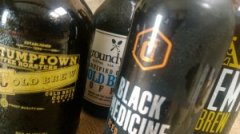Subtle sentiment: Sulawesi and Papua New Guinea
This month's review includes coffee growers in two Indo-Pacific regions, Indonesia's Sulawesi Island and Papua New Guinea. Our original plan included from several other Indo-Pacific Islands-Java Coffee, Bali, East Timor-but we were unable to prove that their sufficient sample sources included. It doesn't matter; we found some excellent and original coffee from the two geographically closest but different origins. At the same time, in this way, it is typical of professional origins: for example, the first Alfred Peet Coffee menu hangs on his counter in his Grape Street store 1966, the most frequently cited professional coffee movement that makes its debut for a moment. Coffee from origin is mostly produced by small indigenous farmers, and two origins are able to provide very interesting coffee. But apart from these commonalities, the differences begin.
Starting with Sulawesi.
Sulawesi is a very large island that winds like four fingers in Australia forming the arc midpoint of the northern archipelago of the Indonesian island republic. Most of Sulawesi's coffee is produced in the Tana Toraja Mountains west of the center of the island. Growers have the native culture of small tribal peoples and rich and colorful Torajan parts.
Production traditionally reflects a better understanding of the Toraya Sumatran model: the "wet" method of coffee in a small production process, meaning that minority shareholders themselves "pulp" or remove coffee skins, remove the dregs through a simple fermentation and cleaning process, partially dried parchment coffee, and then sold to Mills, removed still moist and elastic in high moisture from bean skins, up to 30%. Than the typical 12% of coffee that prevails in other parts of the world. The subsequent drying to 12% is often accidental. The result of wet shelling and casual drying is the famous "Earth" annotation of traditional Sumatran and Sulawesi coffee, which is very slightly moldy. As a result, traditional wet peeled Sulawesi coffee, like traditional Sumatran coffee, usually presents a simple moldy, fruit. Producers and exporters in Sumatra have begun to understand how to systematize wet shelling methods (more complete pulp removal, more systematic drying) to eliminate "earthy" soil / mildew, while still maintaining deep, unique spicy fruit properties. (see better: sumatras 2013). This somewhat complex seems to have been applied only to the clear traditional wet peeling of Sulawesi our review here, 91 of the rated ghost town of Sulawesi Toraja Massa, in a pleasant dry, clay and earth like (my cupping partner Jason sarley calls it "cookie" note) still has ingenuity and complications on chocolate tarts.
Toarco and New Sulawesi Cup
Since 1976, in conjunction with the Japanese and Indonesian company, toarco, has established its own orthodox coffee wet or washing methods popular in other parts of the world to improve quality and replace traditional wet peeling. Toarco process coffee grows on its own farm as well as accepts small parchment coffee to keep farmers in the area who meet certain quality standards. As a result of this range of procurement, individual sections of toarco Coffee can vary in sensory details, but typical profiles can be described as bright and vacuum cleaner compared to traditional wet iron shell coffee while also showing the characteristics of honeyish, chocolate and spicy fruit. We review Santoarco Coffee this month, in the 93 toarco Propeller PT, Blueprint Tana Toraja 92, and Top é CA toarco Jaya 91. The difference in baking style is small, but it is obvious. All qualified American terms professional coffee are light to medium roasted, but the most é CA, the lightest roasted (by a slight gap) shows bright acidity and most nutty characters, while the propeller, dark roasted (again, with a narrow gap) shows the deepest, resonant and chocolate.
Papua New Guinea: achievements and commitments
Located about 2000 miles east of Sulawesi, the country of Papua New Guinea (PNG) occupies a vast eastern mountain area, the island of New Guinea. The extraordinarily green but very rugged mountains of central Papua New Guinea offer one of the world's most favorable local conditions for the production of fine Arabica coffee, as well as the transportation and infrastructure of coffee is the world's most intractable challenge. The coffee industry in Papua New Guinea was developed in the 1950s by foreigners who were familiar with the conventional wet treatment method, which produced a cleaner, more familiar profile than the Indonesian wet shelling process (the method, apparently introduced from the Netherlands).
Important Notice :
前街咖啡 FrontStreet Coffee has moved to new addredd:
FrontStreet Coffee Address: 315,Donghua East Road,GuangZhou
Tel:020 38364473
- Prev

bottled iced coffee
North American cafes for some years have been brewing coffee in advance refrigerated and served over ice on warm summer days. Brewing, Refrigerating Coffee is usually prepared by the cold brewing method: Coffee is steeped in cold or room temperature water for about ten to twenty-four hours, and this continues after extraction, filtration and storage in the refrigerator until it is placed on ice. Japanese cafes and traditional kissaten
- Next

Recyclable coffee cups are coming soon.
Coffee cups for takeaway coffee are always transported to landfills as office waste, but now Martin Myerscough, the British inventor, has invented a method of making coffee cups that can be recycled up to seven times, like newspapers and cardboard. According to Martin Myerscough, a small difference in the mode of production may be significantly reduced because coffee cups
Related
- The milk tea cup becomes smaller?! Overlord Tea Girl launches a new "Return to Yunnan" series
- Accused of selling counterfeit and high-priced coffee beans! Well-known boutique coffee brand "Oukelao" bowed and apologized!
- How to make espresso dumplings? Can I eat coffee and glutinous rice balls together?
- Save the unformed and stagnant powder cakes in one second! What is the problem with stagnant water in the powder bowl of the espresso machine?
- What does hand-brewed coffee stop mean? Why is it not recommended to make coffee by hand?
- Is it normal to smell like coffee? Why does coffee smell like alcohol? What's wrong with the strong smell of cold extract ice dripping ice brewed coffee?
- How to solve the problem that hand-brewed coffee extraction takes too long? Why is the water flowing so slowly when making coffee?
- The main points of making Australian white coffee, the proportion details, how does Australian white properly foam and blend the flowers?
- Can ice water make cold extract coffee? What is the difference between room temperature water and ice water for making cold coffee?
- What milk is best for making latte and white Dirty coffee? What is the difference between different brands of fresh milk and pure milk for making coffee?

